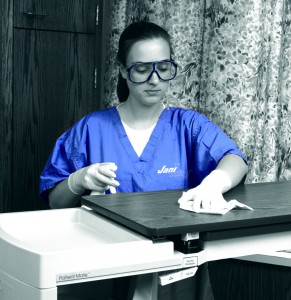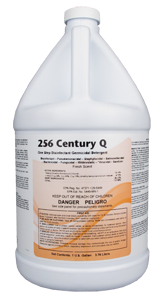Disinfectant Efficacy: A Study on Disinfectants
If you are familiar with disinfectants and infection control, you know that all EPA-registered disinfectants have required concentrations and contact times in order to achieve the desired efficacy. But what happens when a disinfectant is applied incorrectly, either at a lower than required concentration or for an insufficient contact time?
The answer, according to a recent study, is that the efficacy declines. Although this is not surprising, it is interesting to note how the efficacy of a certain disinfectant is affected by changes in concentration or contact time.
The study focused on the bactericidal disinfectant efficacy of three different types of disinfectants: acceler ated hydrogen peroxide (AHP), quaternary ammonium chloride (quat), and sodium hypochlorite (bleach).
ated hydrogen peroxide (AHP), quaternary ammonium chloride (quat), and sodium hypochlorite (bleach).
In a study comparing disinfectant efficacy at the recommended contact times versus shorter contact times:
- AHP disinfectants were only 43.2% as effective using a one-minute contact time compared to a five-minute contact time
- Quat disinfectants were only 30% as effective using a four-minute contact time compared to a ten-minute contact time
- Bleach was 23.7% as effective using a one-minute contact time compared to a five-minute contact time
In a study comparing disinfectant efficacy at the recommended concentration versus lower concentrations:
- AHP disinfectants were 59.1% as effective at half of the recommended concentration
- Quat disinfectants were 37.5% as effective at half of the recommended concentration
- Bleach was 49.3% as effective at half of the recommended concentration
The end result is that all disinfectants are significantly less effective when used with a shorter contact time or a lower concentration. There are no shortcuts to take when it comes to disinfecting; you must use the recommended concentration and ensure that surfaces remain wet for the full contact time. If the directions and label aren’t followed closely, we are risking the contamination of surfaces and the spread of infection.
A good  check of this is to use a measuring device, such as a “quat test strip,” to measure the concentration of the diluted disinfectant and make sure it is diluted appropriately.
check of this is to use a measuring device, such as a “quat test strip,” to measure the concentration of the diluted disinfectant and make sure it is diluted appropriately.
For more information on disinfectants and infection control, visit our Infection Control webpage.
Click here to view the study performed by Sealed Air.










